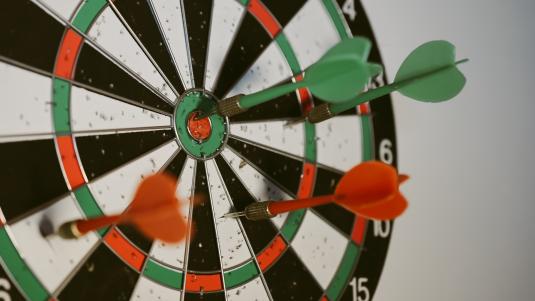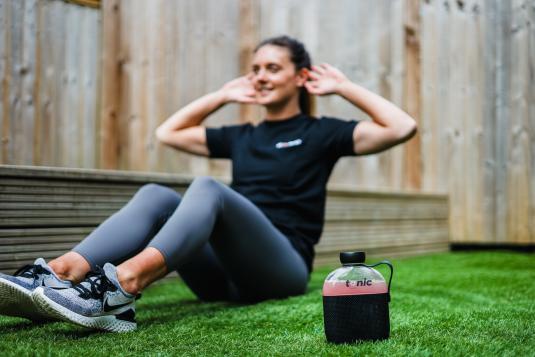
Difference Between YuMuuv Activity Challenges
When you first start to create an activity challenge, it can be a very colorful picture. There are plenty of options, but what's the difference? Let's find out right now.
To clarify right at the beginning, in the personal view, the user always sees their activity data in the same way, regardless of the type or existence of the challenge.
The app has a fixed daily steps target (12 000 steps per day), calories burned target (a personal target for each user according to their gender, age, height, and weight), and minutes of intensity (20 minutes per day with an average heart rate of at least 65% of the user's max heart rate).
Table of Contents

Step Challenge
The most classic challenge - the step challenge. In a step challenge, only steps count. You do not need to have an activity monitor or a smartwatch to take part in this challenge, just a smartphone with a health app (Apple Health, Google Fit, etc.) that counts steps.
When setting up a step challenge, you can set your own target - how many steps a day could your employees take? By creating this challenge, all users who have signed up to your company's code will see a leaderboard of the cumulative steps of others during the challenge period. The daily steps will only be seen by each user.
The user does not have to complete the goal every day (for example, if the goal for a 30-day month is to complete 300 000 steps, the user does not have to complete 10 000 steps every day), but what is important is that the goal is completed by the end of the challenge.
In addition, a step challenge can also be created as a consistency or collective challenge. If there are any questions about this, scroll down to the chapter "Consistency target" or "Collective target".

Activity Index Challenge
The Activity Index challenge is the most comprehensive and includes all the parameters measured in YuMuuv - steps, calories and intensity minutes. A prerequisite for setting up this challenge would be to have as high percentage of activity monitors or smartwatch wearers among your employees as possible (for the reason that intensity minutes are counted from heart rate).
Notably, the Activity Index Challenge will show other participants' summed steps, calories and minutes for each participant over the challenge period, making up the total activity percentage in a leaderboard.
Each metric has an equal share of the percentage, meaning that if the user is not using an activity monitor or smartwatch, the % of minutes of intensity will be zero. This, however, drags down the overall percentage.
In the Activity Index Challenge (if the target is 100%), the user must meet a fixed average daily steps target (12 000 steps per day), burn their calories (a personal target for each user according to their gender, age, height and weight) and meet the intensity minutes target (20 minutes per day with an average heart rate of at least 65% of the user's max heart rate) for each day of the month.
A challenge can also be set up with other target percentages (e.g. 75%), in which case the user only has to meet 75% of the fixed average daily targets. However, in this case, all parameters will be 75% of the target, and the % of individual parameters cannot be changed.
The user does not have to complete the goal every day (for example, if the goal for a 30-day month is to complete 300 000 steps, the user does not have to complete 10 000 steps every day), but what is important is that the goal is completed by the end of the challenge.
In addition, this challenge can also be created as a persistence challenge. If there are any questions about this, scroll down to the chapter "Consistency target".

Intensive Minutes Challenge
Only minutes are counted in the intensity minutes challenge. To participate in this challenge, you will need an activity monitor or a smartwatch that measures your heart rate. Without a heart rate monitor, no data will be entered into the challenge.
Every time the user's average heart rate per minute is at least 65% of their max heart rate (can be calculated using the formula 220 - user's age and then 65%), an intensity minute is generated.
Although the daily target for fixed minutes in the app is 20, a challenge can be created with a different target. An intensity minutes challenge can be created as a consistency or collective challenge. If you have any questions about this, scroll down to the "Consistency target" or "Collective target" section.

Calories Challenge
The calorie challenge is similar to the intensity minutes challenge, but can only be created as a collective goal. As the personal calorie targets for each user vary greatly according to their gender, age, height and weight, it cannot be created as a personal challenge.
This challenge also does not require users to have activity monitors or smart watches, because only calories are counted.

Manual Entry Challenges
To ensure that YuMuuv is not just a moving app, but a platform for overall well-being, we have created manual challenges. These challenges do not require the user to own an activity monitor or smartwatch. It doesn't even matter if you have a smart phone, as long as you have a computer!
You can create a manual challenge for drinking water, meditating, cycling, sleeping and many other activities. The list is long.
In addition, this challenge can also be created as a consistency challenge. If you have any questions about this, scroll down to the section on 'Consistency Target'.

Custom Challenge
But if you are tired of manual challenges and want to create something really special, then the custom option is for you! The system works in the same way as for the manual challenges mentioned above.
In these challenges it is not important that the user has an activity monitor or a smart watch. It doesn't even matter if you have a smart phone, as long as you have a computer!
You can set up a challenge for reading, cooking or even jumping on bed. In addition, this challenge can also be created as a consistency challenge. If you have any questions about this, scroll down to the section on 'Consistency Challenge'.

Total Amount Target
In addition to the different challenges, many of them can be created in different ways. The first of these is the total amount target. This is the most classic of those three ones.
It is a personal form of goal, i.e. each participant is on his or her own in the challenge. Each participant is required to meet the target set by the challenge through his or her own activity. The user does not have to complete the goal every day (for example, if the goal for a 30-day month is to complete 300 000 steps, the user does not have to complete 10 000 steps every day), but what is important is that the goal is completed by the end of the challenge.

Consistency Target
The consistency challenge is designed to get the user into the habit of regularly engaging with the challenge area. The task of this challenge is to complete the goal in a predefined number of days. Activities on one day cannot be transferred to others.
For example, if the goal is to read 10 pages of a book in 16 out of 30 days, it is important to read at least 10 pages in 16 days. It does not count if the user reads 5 today and 5 tomorrow. Other participants will see only the number of days when the goal is reached. No other data.
However, a consistency target in a custom challenge can be created in two ways - simpler, and also with amounts. The challenge with amounts is the challenge described above - the admin sets a numerical goal and users have to meet it.
The simpler option, however, is if you want to create a challenge where you just want to get users to do something. For example, walk during a meeting, listen to a podcast or compliment others. In this case, the user doesn't have to enter the amounts achieved, but can simply tick a box to say that they have done it that day.

Collective Target
Collective goal is a good way to get employees to work together. By creating this challenge, you can set a goal for all employees to collectively meet. For example, one million steps.
In the challenge you can see the collective goal and how much of it you have collectively achieved, but you can also see a leaderboard of employees and who has contributed the most (but also the least).
So if you are as excited as we are to move together, contact us!

